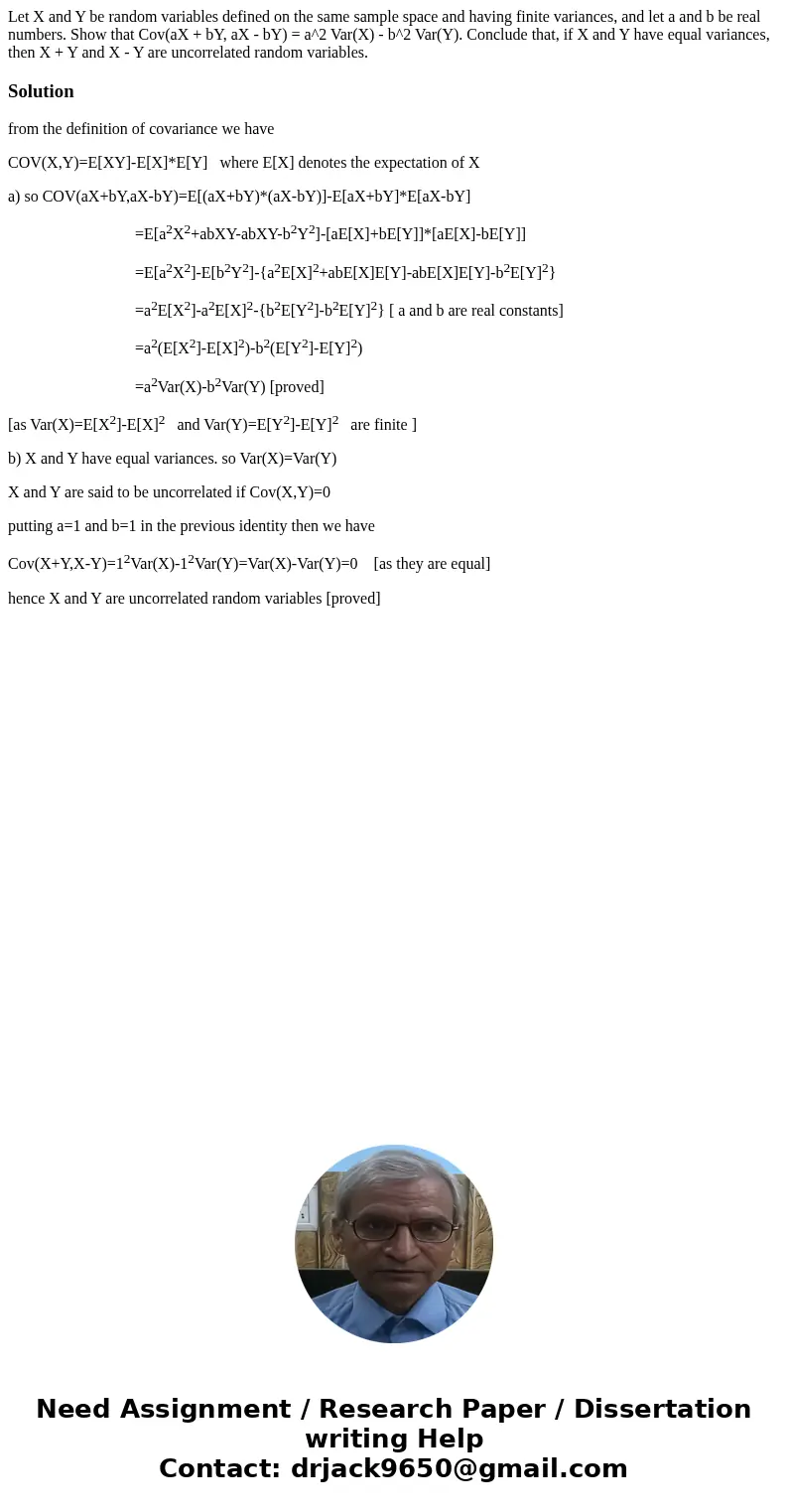Let X and Y be random variables defined on the same sample s
Solution
from the definition of covariance we have
COV(X,Y)=E[XY]-E[X]*E[Y] where E[X] denotes the expectation of X
a) so COV(aX+bY,aX-bY)=E[(aX+bY)*(aX-bY)]-E[aX+bY]*E[aX-bY]
=E[a2X2+abXY-abXY-b2Y2]-[aE[X]+bE[Y]]*[aE[X]-bE[Y]]
=E[a2X2]-E[b2Y2]-{a2E[X]2+abE[X]E[Y]-abE[X]E[Y]-b2E[Y]2}
=a2E[X2]-a2E[X]2-{b2E[Y2]-b2E[Y]2} [ a and b are real constants]
=a2(E[X2]-E[X]2)-b2(E[Y2]-E[Y]2)
=a2Var(X)-b2Var(Y) [proved]
[as Var(X)=E[X2]-E[X]2 and Var(Y)=E[Y2]-E[Y]2 are finite ]
b) X and Y have equal variances. so Var(X)=Var(Y)
X and Y are said to be uncorrelated if Cov(X,Y)=0
putting a=1 and b=1 in the previous identity then we have
Cov(X+Y,X-Y)=12Var(X)-12Var(Y)=Var(X)-Var(Y)=0 [as they are equal]
hence X and Y are uncorrelated random variables [proved]

 Homework Sourse
Homework Sourse